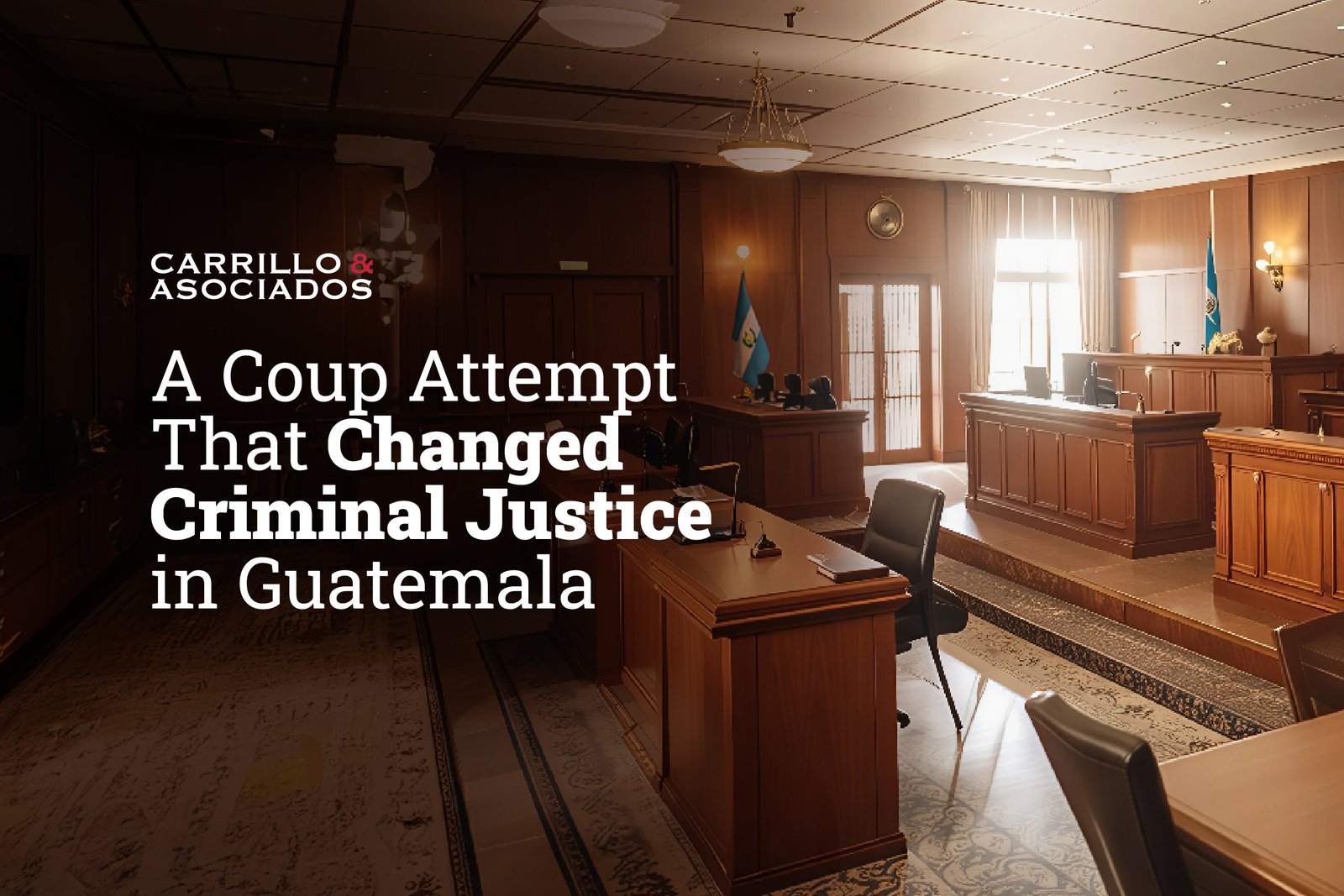
On May 25, 1993, President Jorge Serrano Elías attempted a self-coup to gain absolute control of the Guatemalan system. What he did not imagine was that his failed act would prompt an unprecedented constitutional reform that would transform the justice system.
Today, it is commonplace to see lawyers defending their clients in court, prosecutors presenting evidence to indict a defendant, and judges handing down sentences in a public hearing. But until 1994, trials in Guatemala were practically held behind closed doors. They were limited to sending a written statement to a judge, who was responsible for investigating, analyzing the evidence, and judging the case. There was no oral or public debate, and secrecy prevailed.
Serrano's attempted self-coup led to a series of reforms in the country's justice sector. The changes began with the reform of Article 251 of the Constitution, which allowed the Public Prosecutor's Office (MP) to be established as a new independent justice institution in the country.
This led to the creation of the Attorney General's Office (now the MP) and the position of Attorney General, who from that moment on was responsible for “the exercise of public criminal action,” or in other words, investigating, gathering evidence, and presenting cases before the country's justice system.
But the changes did not stop there. In May 1994, the Organic Law of the MP was approved, and then the new Criminal Procedure Code came into force in July 1994. It is important to note that this legislation, inspired by the Model Penal Code for Latin America[1], was innovative, and Guatemala was one of the first countries to begin building a modern system based on human rights principles and guarantees such as oral proceedings, public
The Beginnings of a Complex System
The entry into force of the Criminal Procedure Code brought about a transformation of the criminal justice system. The first challenge was to provide the new prosecutors with resources and criminal investigation skills. The inclusion of oral proceedings also meant that all those involved in the process, such as prosecutors, clerks, and lawyers, had to be trained.
In addition, it was essential to take into account that the new criminal justice management model, in order to be effective, needed the creation of other entities that would perform complementary functions. Thus, institutions such as the following emerged:
- The Public Criminal Defense Office: with the objective of guaranteeing the right to defense that the reform included for the entire population.
- The National Institute of Forensic Sciences (INACIF): initially, the prosecutor's office was responsible for developing all expert evidence. However, over time, the need arose to create an independent institution to carry out scientific forensic investigations.
- The Victims' Institute: to support complainants in criminal proceedings.
- The Specialized Criminal Investigation Division (DEIC): this was created to provide the National Civil Police (PNC) with a technical criminal investigation component.
Over the years, procedures were also included to make the administration of justice more efficient, to identify cases with a high social impact, and to include new laws adapted to the country's reality.
This led to the creation of specialized courts, such as those for high-risk cases or violence against women (based on the 2008 Femicide Law), and laws such as those on organized crime and acceptance of charges.
Today, more than 30 years later, the justice system continues to face a number of challenges. Doubts have also arisen due to detected shortcomings or misuse of the system by some parties. But the truth is that, despite the passage of time and the adversities faced, what has been built in recent decades remains in place. And if it weren't for this failed self-coup, our system might have taken many more years to evolve.
If we stick to how the criminal procedure system was organized from 1993 onwards from the legal basis, we can affirm that, if applied correctly, this system would help consolidate the rule of law and democracy in Guatemala. This is something that Carrillo & Asociados will always support, not only because it is part of our professional obligations, but because a better country is possible and will benefit everyone and the generations to come.
[1] The Model Penal Code for Latin America was a project launched in 1962 by the Chilean Institute of Criminal Sciences with the aim of creating a common penal code that would serve as a model for countries on the continent. The first version was published in 1973 and included important principles such as respect for human rights, proportionality of penalties, and social reintegration.
Published on August 4, 2025